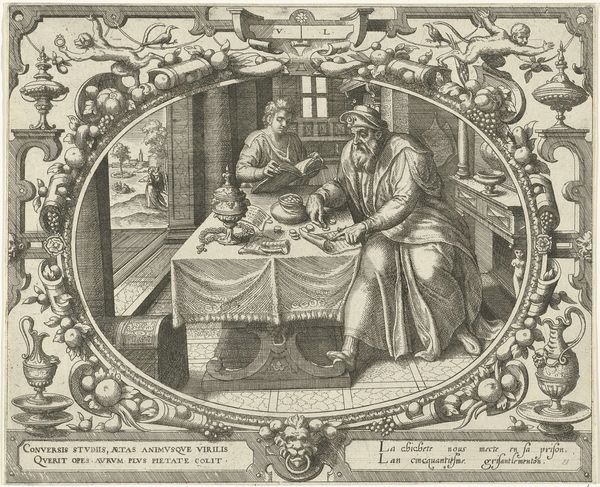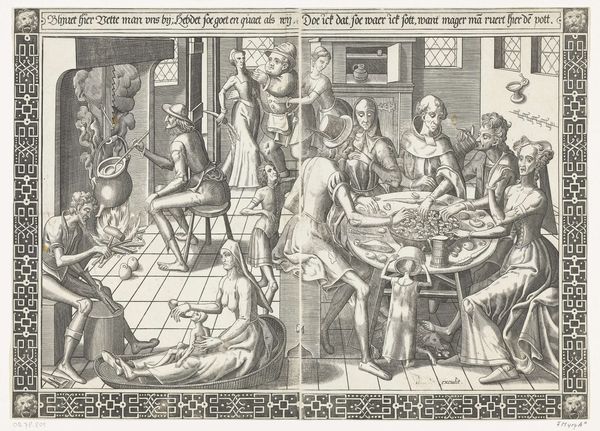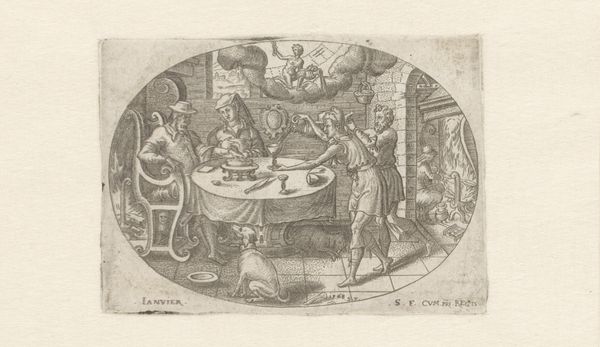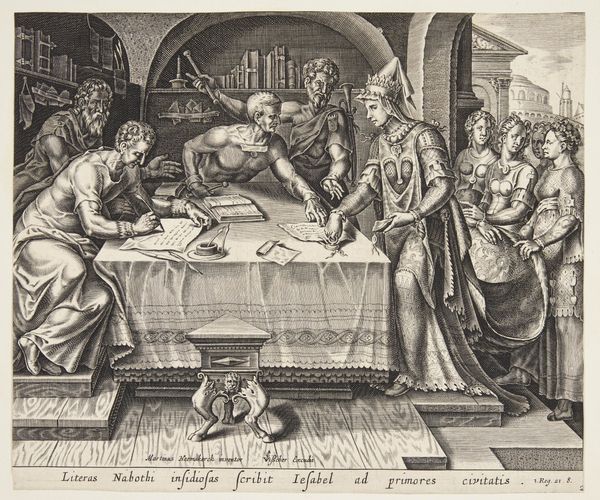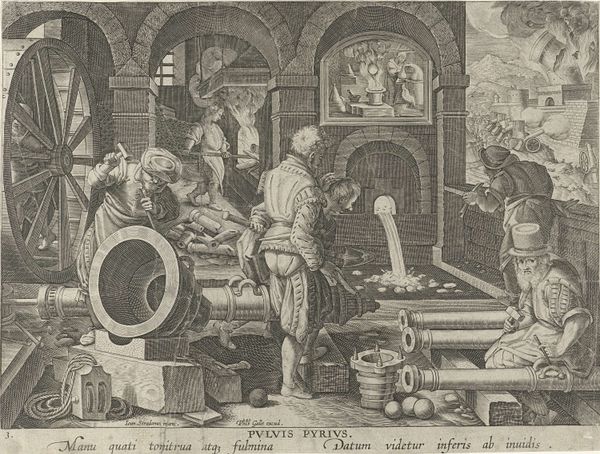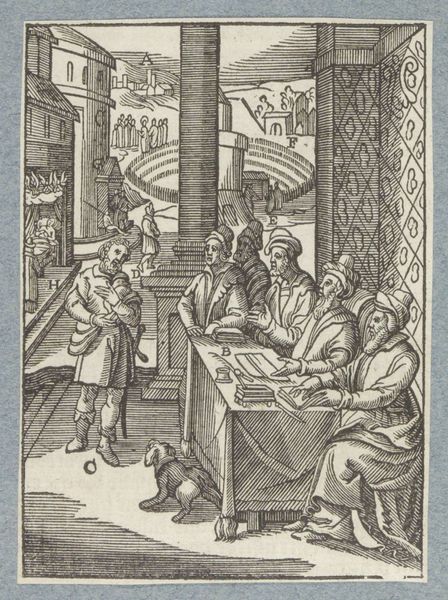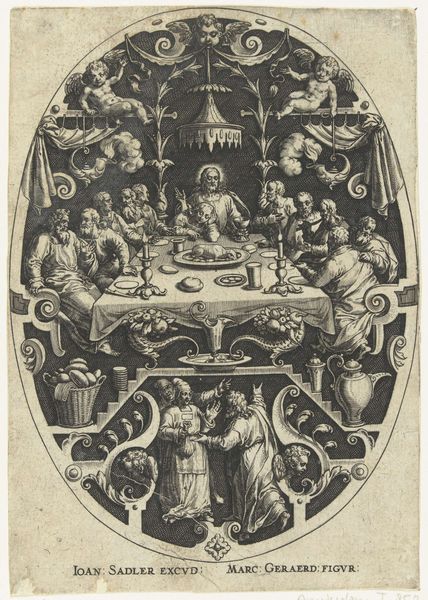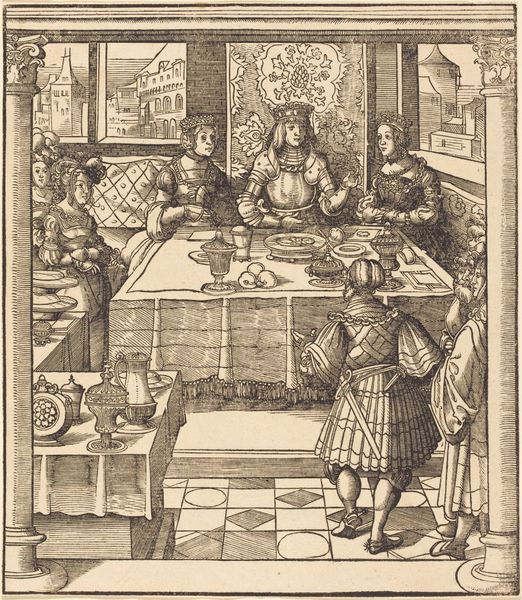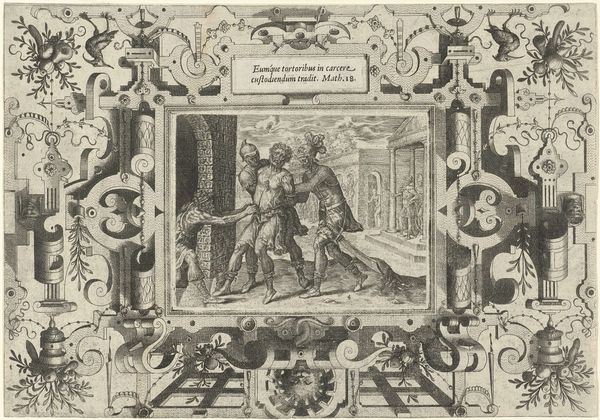
print, engraving
#
narrative-art
#
pen drawing
# print
#
old engraving style
#
figuration
#
11_renaissance
#
line
#
genre-painting
#
northern-renaissance
#
engraving
Dimensions: width 242 mm, height 197 mm
Copyright: Rijks Museum: Open Domain
Editor: So, this is "The Man at Seventy Years Old" by Gerard van Groeningen, made sometime between 1569 and 1575. It’s an engraving, held at the Rijksmuseum. The detail is just incredible for something so small! I'm struck by the depiction of everyday life, but what else should I be looking for in a piece like this? Curator: It’s a fascinating snapshot, isn’t it? Forget any highfalutin ideas for a moment and consider: what is the literal *stuff* here? We have an engraving - a reproducible image made by a skilled artisan laboring with metal and ink. What does this process tell us about the intended audience, and the work’s function? Is it for display or dissemination? How does it fit into the burgeoning print market of the Renaissance? Editor: That's a perspective I hadn't considered. It highlights how this wasn't just about artistic expression but also about production and consumption. How might that affect its meaning? Curator: Well, this isn't a unique painting displayed in a noble’s private collection. Engravings were more widely available, weren’t they? Look at the image itself: the clear, linear style makes it easily readable, almost like a diagram. Consider the text included—multiple languages accessible across a wider audience. So what commentary on age do you think that is trying to achieve? Editor: So, rather than an idealized, aestheticized portrayal of aging, the engraving's availability suggests it was meant to inform a wider audience about aging in general. A commentary, on growing older, but accessible to many people. It brings the message to the masses, I see it! Curator: Exactly! And consider the role of the artist and workshop, the distribution networks, even the act of collecting these prints. Each step involved labour and commerce, deeply intertwined with the art itself. This challenges the notion of the artist as a solitary genius. Editor: So understanding the means of production offers a much richer and frankly a more real picture of what art meant at that time and means now. Thank you, that was really helpful. Curator: And, hopefully, demonstrates the real work involved in seeing any piece of art in the world!
Comments
No comments
Be the first to comment and join the conversation on the ultimate creative platform.

